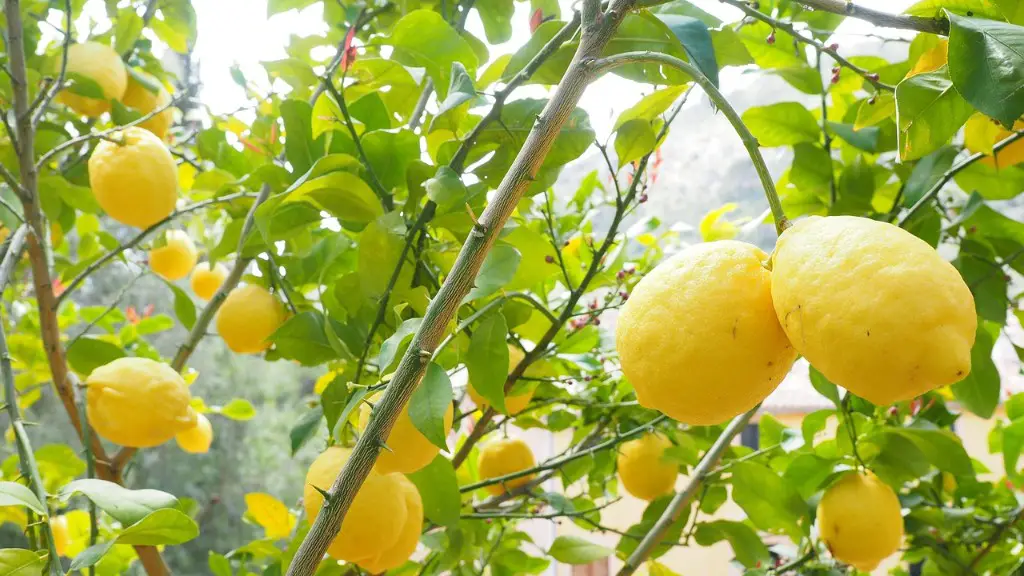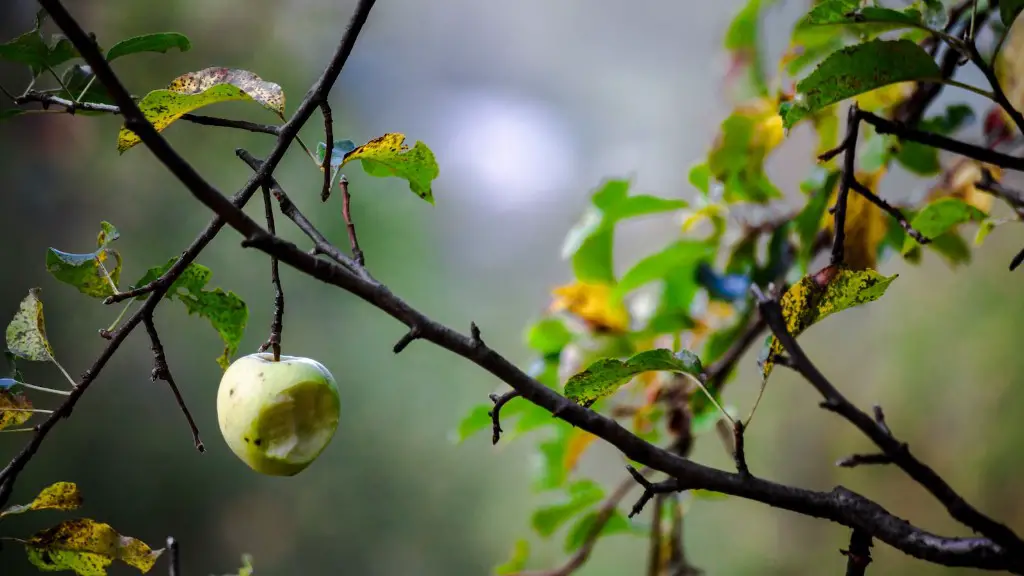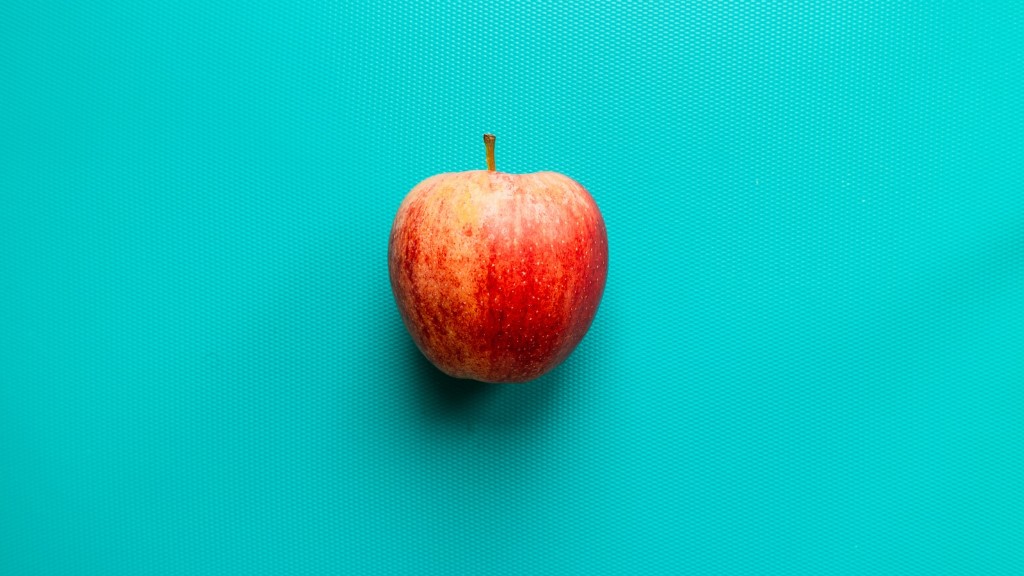Introduction: Soil is one of the most important components for lemon trees to thrive and produce their delicious yellow fruits. The type and amount of soil needed for a lemon tree is largely determined by its environment and particular growing conditions. In this blog post, we’ll explore exactly how much soil does a lemon tree need and why this is integral for its health.
The roots of a lemon tree are its most essential organ. They need to be able to spread widely and snatch up essential nutrients, such as calcium, phosphorus, zinc, and manganese, from the soil. The lemon tree’s roots must also be able to absorb large amounts of water and prevent the tree from drying out during droughts. Different types of soil can provide different levels of support to the roots system. Where sandy soils are more well-draining, clay soils are more moisture-retaining.
Which kind is best for a lemon tree? Well, it depends. The primary factor is the climate the tree is growing in – moist and cool climates need different soil than dry and hot climates. In terms of soil texture, well-drained, loamy soils are generally considered the best for lemon trees. As lemon trees need an even amount of drainage and moisture retention, this makes loamy soils the ideal choice, as they have just the right balance.
That brings us to the amount of soil needed for a lemon tree to function properly. Generally speaking, 5-10 gallons of soil for each lemon tree is considered about right. On the one hand, this gives the roots the space they need to grow, search for nutrients, and store water. On the other hand, a too-large amount of soil can lead to waterlogging at the bottom and put the tree at risk.
However, that number of gallons is just a general rule of thumb and doesn’t take into account the specifics of an individual plant’s growing conditions. In any case, the soil should extend a few inches around the base of the tree while still leaving enough room for roots to keep on growing. Also, placing mulch around the tree’s root system is a great way to keep it healthy, as it helps with water retention, protects from frost and other extreme weather, and prevents the growth of weeds.
The soil’s nutrients should also play a role when it comes to determining the soil’s overall impact on a lemon tree’s health. Adding compost, fertilizers, and other minerals can help enrich the soil and provide much needed nutrients to the tree’s roots. Doing a soil test is also a great way to determine the nutrient content of the soil and to see what needs to be added to make it suitable for a lemon tree.
In conclusion, it depends on the climate, the texture of the soil, how much space is allowed for the roots, and how nutrient-rich the soil is. Generally, 5-10 gallons of loamy and well-draining soil is a good amount for each lemon tree. The soil around the roots should also be supplemented with mulch, and a soil test can help determine whether or not extra fertilizers and minerals need to be added.
What Are the Benefits of Loamy Soil?
When it comes to growing lemon trees, one of the most important soil components is loam. Loam is a combination of sand, silt, and clay, and it’s considered the ideal soil for citrus trees as it provides an optimal balance of water drainage and moisture retention. Loam also contains lots of organic matter which makes it rich in nutrients and perfect for growing lemon trees.
In addition, loamy soils retain moisture better than sandy soils and are more resistant to erosion. The organic matter in loam also helps to break down minerals and make them more easily available for the tree’s roots to uptake. This is especially important for trees in arid climates, as it means they have a better chance to find nourishment even in harsh conditions.
Loam also helps to stabilize pH, which is vital for lemon trees. Lemons tend to like slightly acidic soils, so having loam helps keep the pH constant. As an added bonus, loamy soils usually don’t need to be fertilized as much as sandy soils, as it’s capable of holding onto nutrients better.
Finally, loam is much easier to till and work with than clay or sandy soils. Lemons trees don’t need a lot of air space in their soil, so your best bet is to go with loam, as it’s sturdy enough to prevent many soil-related problems. It also makes aerating and weeding much easier, while still providing great drainage.
What About the Quality?
In addition to determining the right amount of soil for a lemon tree, ensuring its quality is also essential. While loamy soils are generally a good choice for lemon trees, if the soil doesn’t contain enough organic matter and other essential nutrients, it can lead to problems later on. A soil test can help identify any issues or deficiencies.
Soil tests can also help you determine soil pH and other factors like salinity, which can have a big impact on a tree’s health. To be on the safe side, soil should have a pH between 5.5 and 7.0, depending on the variety of lemon, as different varieties tend to prefer slightly different pH levels.
In addition, avoiding overcrowding is also important. If there’s not enough space in the soil, the tree’s roots won’t be able to expand and absorb the essential nutrients. Overcrowding can also lead to diseases, such as root rot, and make it difficult for oxygen to reach the tree’s roots.
So, quality also has a big influence on how much soil a lemon tree needs and how healthy it’ll be. Ensuring the right pH and nutrient balance, avoiding overcrowding, and supplementing the soil with organic materials are all great ways to make sure a lemon tree is getting the best possible soil.
What About the Environment?
The climate a lemon tree is growing in is also critical for its optimum growth and production. Knowing the environmental factors of the area you’re growing in can help you make the best decisions when it comes to soil for your lemon trees.
For instance, cool and humid areas require heavier soils with higher moisture retention, so loam is a great choice. On the other hand, hot and dry regions need lighter soils which are well-draining. So, in a hot climate, you may want to opt for a sandy soil or a combination of sand and loam.
What’s more, the soil should be measured based on the season of the year. During the rainy season, you may need to use soils with less water drainage and more moisture retention, while during the dry season, soils with higher drainage should be used.
The temperature range in the region also has to be taken into account when picking the right soil type. If the area is exposed to extreme temperatures, then select a soil which is more suitable for these conditions, such as soil with lots of organic materials or sandy soils with light textures.
Finally, soils should be renewed or replenished frequently, especially if there are pests or diseases present. Replenishing the soil with amendments, such as fertilizers and compost will help keep the soil in good condition.
What About Mulch?
Mulch is a great way to protect your lemon trees and ensure they have the best possible soil. Mulch helps to reduce the chances of soil compaction and can retain moisture for long periods of time. This is particularly important for trees growing in dry climates.
What’s more, mulch can also help protect the root system from extreme temperatures. This is especially important during extremely hot summers, as mulch helps to keep the soil cooler and protects the roots from the heat. Additionally, mulch can also help reduce weed growth and cut down on the need for fertilizers.
In terms of how much mulch should be used, a 2-4 inch layer of mulch should be spread around the tree, taking care not to cover the tree’s trunk. This will help to protect the roots and keep the soil in optimal condition.
Finally, mulch must be replenished regularly as it can start to decay and break down over time. Usually, it’s recommended to change the mulch every 2-3 years to ensure it’s still doing its job.
What Type of Fertilizers Are Best?
Fertilizers are an essential part of keeping a lemon tree healthy and producing a good crop. Depending on your soil’s nutrient content, you may need to add various types of fertilizers to ensure the tree’s getting the nourishment it needs.
Organic fertilizers, such as compost, are a great choice for supplying essential nitrogen, phosphorus, and potassium to the soil. They’re slow-release and help to promote healthy root growth. What’s more, organic fertilizers also help to encourage beneficial microbes in the soil, which in turn aids nutrient uptake by the tree.
Synthetic fertilizers, such as nitrogen-rich urea, can also be used to boost soil fertility. This type of fertilizer is fast-acting, so it can quickly provide the nutrients which are needed for the lemon tree to grow and produce a great crop. However, synthetic fertilizers should be used sparingly, as they can easily damage the soil in large quantities.
In terms of how often to fertilize, compost and organic fertilizers should be applied once a year, while synthetic fertilizers can be used every other month. Always keep in mind to follow the directions on the fertilizer’s package, as this will help you get the most out of the fertilizers without overdoing it.



